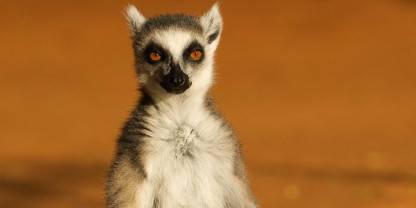Average Expert Rating
Rating Breakdown
Write a User ReviewDancing Sifakas & Ragged Ringtails
It is only about 2.5km2 in size but incorporates a lovely patch of evergreen gallery forest alongside the Mandrare River. The small island-like nature of this reserve means that the wildlife is very constrained and therefore easy to see.
You will find friendly, habituated troops of brown and ring-tailed lemurs as they go about their business socializing and foraging for food. During the heat of the afternoon, it’s not unusual to find them lounging around on your patio beneath the shade of your awning. Leave a door open by accident, and you are likely to find a troop of lemurs rummaging through your luggage and toiletries.
Berenty is also famous for its ‘dancing’ Verreaux’s sifaka. Watching them leap like ballet dancers down the reserve’s sandy roads is a highlight.
Sadly, during the dry season (July to September) food can
Read more
become scarce in the forests, and some of the primates have taken to eating an invasive plant that causes their hair to become patchy. As such, they can end up looking a little like irradiated gremlins.There’s also an option to drive to some nearby spiny forest fragments for both day and nighttime guided walks. There, you will see nocturnal animals such as the tiny mouse lemur and wide-eyed sportive lemurs as they leap between the thorny branches of strange, otherworldly ‘octopus’ trees.
A Contrived ‘Spiny Forest’ Primer
Read more
to see endemic dry-country birds such as giant coua, running coua, subdesert brush-warbler and thamnornis-warbler.An Oasis for Ring-Tailed Lemurs and Verreaux’s Sifakas
The mid-range lodge is very popular with package tourists and it can get a bit crowded, but as you are allowed to move around the property unguided, it’s always possible to find a quiet corner and have a special
Read more
private encounter with the diurnal lemurs. To see nocturnal species, such as mouse and sportive lemurs, you can join a guided night walk in a patch of spiny forest.Ring-Tailed Lemurs and Tamarind Forests
Berenty is a funny place. It has long been known as an important ecotourism destination, largely because it was one of the first of its kind in Madagascar. The BBC has filmed here on a number of occasions. It is rightly famed as one of the best places in the country to see ring-tailed lemurs, because this is one of the few places in the country where they are habituated and less afraid of people (which is, of course, why wildlife film crews love it). The tamarind gallery forest that dominates much of Berenty is something of a rarity elsewhere these days, and the Mandrare River has some pretty corners.
However, Berenty is a long way from anywhere. The wildlife viewing is just as good, probably even better, in some of the other parks of the south. My overall impression is of a once-important reserve whose appeal has been surpassed by other, more accessible reserves across the country.

